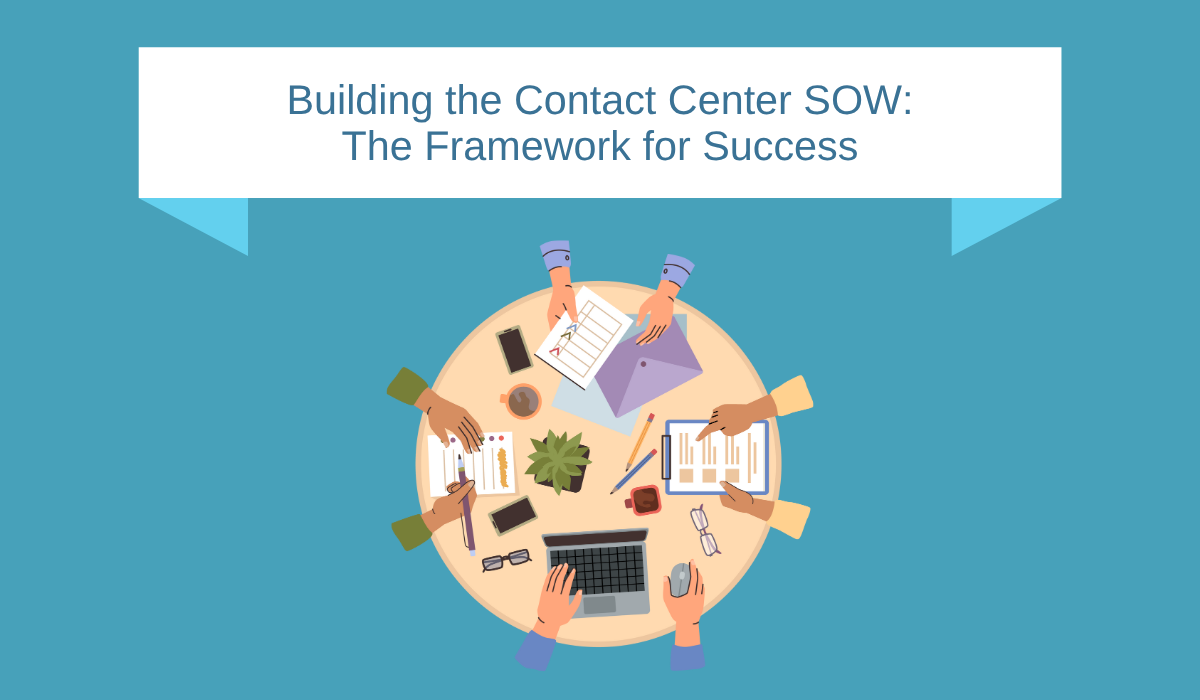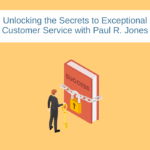Building the Contact Center SOW: The Framework for Success

You’ve heard it before: Stress is the outcome of reality not aligning with expectations. And nothing takes a toll on relationships quite as quickly as stress.
When outsourcing customer support – whether for the first time or the fifth time – your company’s relationship with the contact center is understandably complex. You simply can’t rely on an unwritten set of rules or assumptions to guide your collaboration or, sooner or later, that partnership will come under serious stress. That’s where a formal Statement of Work (SOW) comes into play.
The contact center SOW is the framework for your relationship. It’s a dynamic document that, like your partnership, requires time and attention. This article will walk you through key steps for building an effective SOW:
1. Lay the Foundation for Your Contact Center SOW
The starting point of the contact center SOW is a description of the project – i.e., a summary of the exact services that are being contracted. This should be followed by a clear breakdown of roles within the project:
- What do the management teams look like on either side of the table?
- Who serves as the primary point of contact?
- Who is authorized to make changes to the contract?
It’s straightforward information that will ensure that everybody is focused and on the same page. It also holds everyone accountable for the role they’re supposed to play.
The more mundane details of the SOW should be included here too: from billing and payment specifics, travel expenses, and term agreements to warranties, liabilities, insurance, compliance, and confidentiality.
Pro tip: Set aside a section for tech requirements.
With contact center technologies fast evolving, up-to-date IT infrastructure has become a basic requirement for efficient customer support. Lay down the tech responsibilities including desktop equipment, software applications, database access, telephony, redundancy solutions, and more. Make sure there’s no room for ambiguity by answering questions like:
- What integrations and licenses are needed?
- Who is responsible for the costs of licensing specific tools and programs?
- How often are updates to be rolled out?
Once again, this should be fairly standard information, but making sure you’re on the same page is critical so that nothing is overlooked and expectations are aligned.
Get all this set in stone and out of the way before diving into the more sensitive details.
2. Clearly Define Your KPIs
Building out KPIs that accurately represent what success looks like to your organization is probably the single most important thing you are going to do in the contact center SOW. Your customer care partner is going to focus their time and resources on meeting these targets. You better be sure they are aiming at the right things.
What Happens When KPIs Are Lost in Translation
Here’s a true story: We had a client in the luxury automotive space. We were supporting their customers in the North American theatre of their global operation. For 27 months straight, we were green on every KPI in the SOW… and then they fired us.
How come? Because we didn’t know until the waning days of our relationship that our client was being measured by their head office in Europe on one KPI above all others: the scores on their post-contact surveys – a metric that didn’t even appear in our SOW.
With that painful learning experience under our belts early in our evolution, you can bet that now we start with what success measures are most important at the most senior levels of the client organization and work from there to build the KPIs.
3. Set Strong Parameters Around Forecasting
Forecasting is another critical piece of the SOW puzzle. Accurate call volume forecasting informs the strategy around staffing, the allocation of skills and human resources, and the strategy around deploying channels and AI for customer care.
The contact center SOW should lay out the responsibilities associated with gathering historical data and determining future volume. As the project continues, this will become a collaborative process.
In addition to establishing responsibilities, the SOW should establish contingency processes (and compensation adjustments/exclusions) for situations when contact volume exceeds forecasts or forecasted volume doesn’t materialize.
4. Establish Reporting & Analytics Expectations
Reporting and analytics are essential for creating a culture of continual improvement. The contact center SOW will outline exactly what and how often metrics are to be reported and analyzed. But in a true strategic partnership, you will want to go beyond a responsibility to provide operational data.
Assign accountability for bringing insights and recommendations on bigger picture strategic initiatives. Making time to discuss how your data relates to the customer experience and customer journey on a regular basis will be essential.
5. Build in Big-Picture Targets with a Risk & Reward Model
Your vendor needs to walk the walk and be accountable to the contracted service level. However, there does need to be a framework of incentives and penalties in place in the scenarios of exceeding or falling short of projected KPIs and other measurement scores.
Sometimes, this will be reflected in the pricing model you agree upon, such as a transactional versus hourly model. As your business relationship evolves and grows, so too may this framework of risk and reward.
6. Keep Your SOW Evergreen: Adjust and Realign
Because the contact center SOW is a roadmap, which will need to be adjusted every time you and your partner go down a new road together, there needs to be regular communication to ensure alignment of expectations. That communication should be continuous – from day-to-day monitoring to weekly and monthly reports to more structured quarterly business reviews (QBR).
During a QBR, you will directly address how the previous quarter impacts what the SOW should look like going forward. Do metrics need to be adjusted? Are service levels being executed? When big decisions need to be made, these changes can be reflected in addendums to the SOW.
Building the Contact Center SOW
Essentially, the SOW takes your relationship and turns it into a contract. The strategy you bring to the development of your SOW can make the difference between a long-term, mutually beneficial strategic partnership founded in trust or a short-term vendor/buyer relationship where stress is inevitable. That’s why we always say “slow down to go fast” in the development of the contract. Get that SOW right, and you’re on the road to success.
Looking for a new contact center partner? We can’t wait to hear more. Schedule a consultation now.





![What You Need to Know When Looking for a New Contact Center Outsourcer [Slideshare]](https://blueocean.ca/wp-content/uploads/2017/07/What-You-Need-to-Know-When-Looking-for-a-New-Contact-Center-Outsourcer-150x150.png)